Overview
Located in the Garhwal region of Uttarakhand, the Madmaheshwar trek offers beautiful landscapes, dense forests, and a glimpse of the rich culture and heritage of the region.
The Madhyamaheswar trek is perched in the Himalayas, at a height of 11,473 ft. This 32-kilometre trek, therefore, is the epitome of what every trekker relishes. As the route passes through the Kedarnath Wildlife Sanctuary, trekkers come across the rich flora and fauna of the region too. Besides, the place is filled with legends and mythology, linking to the Mahabharata. Then comes the revered Madhyamaheswar Temple, dedicated to Lord Shiva, which is an ancient temple and a sacred pilgrimage site.
When trekkers visit the Madhyamaheswar trek in search of adventure, the trail greets them with a plethora of things to watch out for. The lush coniferous forests, including rhododendrons, oak, and deodar, with the Madhyamaheswar Ganga River flowing alongside, the spiritual significance of the Madhyamaheswar temple, and the scenic beauty of the Chaukhamba massif under the first light of the sun. All of these make this trek a demanding one requiring a decent level of fitness, but the trek is worth every effort!
The Madhyamheswar Temple, which is the highlight of this trek, remains closed from November to April. The monsoons are also a challenging time to complete this trek. Hence, the best time for the Madhyamaheswar trek is the spring and summer seasons, that is, from March to June, or the post-monsoon season, that is, from September to October. If you have been planning a trek to Madhyamaheswar, this detailed guide is for you. Find out the trek itinerary, the highlights of this trip, and every detailed information you need to know before starting out in this journey of spiritual salvation and adventure.
Madhyamaheswar At A Glance
| Information | Details |
| Region | Garhwal region of Himalayas; Rudraprayag district of Uttarakhand |
| Altitude | 11,473 ft/3497 m |
| Base camp | Ransi |
| Difficulty level | Moderate |
| Distance | 28 km |
| Days/Duration | 3-4 days |
| Best time to visit | Spring/summer (March to June), post-monsoon (September-October) |
Highlights of the trek
The Madhyamaheswar trek is a perfect balance of remarkable views, thrilling adventure, and cultural and spiritual exploration. Here is a list of things that every trekker should look forward to while completing the Madhyamaheswar trek:
- Kedarnath Wildlife Sanctuary
The trail passes through the Kedarnath Wildlife Sanctuary, which is home to rich flora and fauna. One of the most diverse ecological systems, the Sanctuary houses several endangered and protected species, including the Himalayan Musk Deer. The sanctuary faces diverse climates, creating dense forests of oak, birch, rhododendrons, and alpine meadows. Besides these, the Kedarnath Wildlife Sanctuary is home to various birds, making it a well-known spot for bird-watching.
- The Chaukumbha Massif
The Madhyamaheswar trek is one of the easiest treks that takes you so close to the Chaukambha Massif. Although the trail barely touches 11,000 feet, trekkers can experience the breathtaking view of the first rays of the sun glistening on the snow-covered Chaukhambha range.
- Madhyamaheswar Temple
The Madhyamaheswar temple is fourth in the holy series of Panch Kedar. This holy circuit includes Kedarnath, Tungnath, Rudranath, Madhyamaheswar, and Kalpeshwar, all of them dedicated to Lord Shiva. Each of these five temples has a unique history and significance, and they represent the five body parts of Lord Shiva when he appeared in the bull form. The Madhyamaheshwar Temple has Shiva’s navel as a Shivling. The story is connected to the sacred Hindu epic, Mahabharata, where it has been established that the Pandavas founded Panch Kedar to seek forgiveness for their sins. Since then, the holy circuit and the Madhyamaheswar Temple have become sacred sites for Hindu pilgrims to attain spiritual enlightenment.
Trek Itinerary
Drive Distance & Time: Approx. 200 Km; 8-9 hours
Altitude Gain: 2,100 m/ 6,890 ft
Today’s Difficulty: Easy
The Ransi Village in Uttarakhand is the base camp of the Madhyamaheswar trek. Since this is the starting point, you will have to reach this quaint village before starting on the final trek. The nearest airport to Ransi is the Jolly Grant Airport in Dehradun, and the nearest railway station is Rishikesh railway station. Both of these cities are approximately 230 km away from the Ransi Village, taking you around 8 to 9 hours to drive.
The Ransi Village has the last motorable road for the Madhyamaheswar trail and offers food and accommodation options. From the cities, you can first reach Ukhimath, and from here, Ransi is 20 km away. The village is a quaint settlement with terraced fields and traditional Himalayan architecture. The drive offers views of the scenic Uttarakhand landscape as lush forests, mountains and charming villages join you on the ride. Watch out for the Sangams, the dam in Srinagar, and the scenic views after Rudraprayag. Arrive at your accommodation in Ransi and prepare for the trek ahead.
Trek Distance & Time: 13 Km; 6-7 hours
Altitude Gain: 2100 m/6890 ft. to 3497 m/11473 ft.
The first day of your Madhyamaheswar trek starts from the Ransi Village. The trail is well paved and mostly a downhill one. The path starts right above the Madhyamaheswar Ganga, and you can see it flowing alongside you on your way to Choti Bantoli. The trek is easy and allows you to stop and enjoy the scenic beauty of the region.
From Lower Bantoli, the altitude gain to Madhyamheswar is close to 5000 feet. The ascent is steep and adds to the challenges of the trek. With the altitude gain, you will notice the pine trees covering the grasslands. The rough climb, however, is compensated with the breathtaking views along the trail. Following the rough ascent, the final hundred metres are a flat walk to reach the temple. The view is one of the most mesmerising you will ever see. With a few huts settled on the foothills, a serene stream flowing down and becoming one with the Madhyamaheswar Ganga River, and the backdrop of the majestic Himalayas, it seems like a wallpaper coming alive. In the next 10 to 15 minutes, you will reach the Madhyamaheswar Temple.
The Temple radiates spirituality as soon as it comes into sight. The ancient architecture of the temple makes it even more charming. The Temple has two other small shrines, one dedicated to Goddess Parvati and the other to Ardhanarishvara (a representation of half-Shiva, half-Parvati). If you visit the Madhyamaheswar Temple during May to October, you can witness the grand evening Aarti, which is an auspicious event. At the temple complex, you can stay for the rest of the day. Feel the positive vibrations and rejuvenate as you prepare for the next day.
Trek Distance & Time: 2 Km; 1-2 hours
Altitude Gain: 7,300 ft
Altitude Gain: 3497 m/11473 ft. to 3800 m/12467 ft
The third day of the Madhyamaheswar trek is the most important. The second day might have been the toughest; however, on the 3rd day you get to experience the crux of this trek, that is, the Chaukhamba Massif view. Start your days as early as possible to reach Buda Madhyamaheswar at the right time of sunrise.
The trail that lies west of the Madhyamaheswar Temple is the one that takes you to Buda Madhyamaheshwar. The ascent ranges from gradual to steep and takes 1 to 2 hours to complete. The name Buda Madhyamaheswar comes from the small shrine that is next to the pond. The shrine is older than Madhyamaheswar, and hence the term ‘Buda’ or ‘Budha’. It literally means an ‘old man’ in Hindi and translates to Old Lord Shiva.
Once you reach the top, you will witness a majestic sight. As the sun rises and the first light hits the mighty Chaukambha Massif, the image is priceless. The snow-covered mountain shining under the first light and the reflection of this entire scene on the Buda Madhyamaheswar pond is a sight that makes your efforts worth it.
Enjoy the serene view as much as you want, and then start heading back for the base camp. The trek back to Madhyamaheshwar Temple, to Choti Bantoli and then to Ransi would take approximately 6 hours. So, prepare yourself and start your journey accordingly.
Drive Distance: 200 km: 7-8 hours
Your journey ends at Ransi base camp, and here you can rest for the night. The next day, you will have to drive back to Rishikesh or Haridwar to reach the railway station or the airport. The drive back is as scenic as the trek and will comfort you on your journey. Relive your trek as you head back to everyday life and bid farewell to the calm and serene nature.
Package Details
Price Inclusion
Accommodation for 3 nights: Stay is included from Day 1 to Day 3 (base camp to base camp). It includes a homestay for 2 nights and 1 night in Madhyamaheshwar.
Transportation from Dehradun to Dehradun): Transport from Dehradun to Ransi and back is included.
Meals: Meals from Day 1 dinner to Day 4 breakfast
Forest Entry and Permits: All required fuel charges, tolls, forest entry fees, and permits are covered.
Experienced and Certified Guides: A qualified, professional team, including a mountaineering-certified trek leader and driver will accompany you.
Emergency Kit: First aid medical kits, oxygen cylinders, and stretchers are provided to ensure the safety, comfort and well-being of all participants.
Trek Certificate & HDT Badges: Receive a trek certificate and HDT badges to celebrate your adventure.
Price Exclusion
Meals during Transfer: Meals are not included while traveling to and from the trek starting points.
Emergency Evacuations: Any charges related to emergency evacuation are not included.
Personal Expenses: Any meals or accommodations outside of the provided itinerary or additional services not listed in the inclusions.
Personal Luggage Carrying: Charges for mules or porters to carry personal luggage are NOT included in fees.
GST (5%)
Best Time to Visit for this Trek
The best time to complete the Madhyamaheswar trek is in the spring and summer seasons (March to June) and in the post-monsoon season (September to October). The monsoon season poses numerous challenges to trekkers, and the view of Chakhamba Massif is not clear due to the weather. Winters are also advised against since the area receives a lot of snowfall due to the steep ascent. The trail can get blocked, causing hindrances in the trek.
| Attribute | Details |
| Temperature Range | 8° C to 20°C during the day |
| 5°C to 10°C at night | |
| Weather | Clear skies and pleasant trekking conditions. |
| Clothing layer required | Upto 3 warm layers: Thermal inners with fleece over and a jacket |
| Ideal for | Comfortable trekking experiences; sight-seeing and outdoor activities. |
| Special features | Lush forests with blooming flowers, bird-watching activities, and diverse Kedarnath Wildlife Sanctuary. |
The spring and summer months are the most ideal for the Madhyamaheswar trek. The weather conditions are highly favourable for comfortable trekking and outdoor activities. The diverse flora of the Kedarnath Wildlife Sanctuary is in full bloom, contributing to the experience of the trek.
| Attribute | Details |
| Temperature Range | 10° C to 17°C during the day |
| 1°C to 10°C at night | |
| Weather | Predominantly clear weather and pleasant temperatures. |
| Clothing layer required | Upto 5 warm layers: Thermals with fleece over, and a windproof or padded jacket. |
| Ideal for | Fewer tourists and comfortable temperatures; serene and peaceful for pilgrims. |
| Special features | Vibrant and lush forests, minimal rainfall, clear skies, and pleasant trekking conditions. |
The Madhyamaheswar trek has a vibrancy to it during the post-monsoon months. The region is vibrant with clear skies and minimal rainfall, allowing the trekkers a comfortable weather condition. The weather might be chilly, but with the right clothing, you can enjoy the vibrant hues of the region during the autumn (post-monsoon) months.
Difficulty Level of this Trek
The Madhyamaheswar trek falls under the category of easy to moderate treks, based on the difficulty level. The trek takes over 3 days to complete, with a steep ascent of approximately 5930 feet in altitude. The trek is not difficult to traverse; however, the ascent from Lower Bantoli to Buda Madhyamaheswar Temple is steep. The rough ascent requires an adequate fitness level and preparation on the part of the trekkers. Hence, it can be challenging for beginners, especially if they have no prior trekking experience.
The terrain consists of mud and loose gravel, making it slippery during the monsoon and post-monsoon months. Hence, it is advised to trek during these months with utmost caution. Invest in a sturdy pair of boots and check the weather to avoid heavy rains on the trek days. Fitness plays a major role on the second day of the Madhyamaheswar trek. The elevation is steep, and the distance is comparatively greater too.
Find out some tips on how to prepare for the trek in the next section.
Preparation for the Trek [Physical Fitness, AMS]
The Madhyamheswar trek is not an easy one and requires some level of physical fitness. The following are some ways to improve your fitness before the trek:
- Endurance training: Start building your endurance with a few endurance exercises. Set a target of jogging for 5 km in 40 minutes, and then increase it to running at a comfortable pace. Cycling is another great alternative to running too.
- Strength training: Besides cardio training, strength is another important factor for a trek. For a comfortable journey, include leg and core exercises in your routine.
- Flexibility training: Trekking requires you to improve your flexibility so your body can move comfortably in any direction. Plus, exercises to train your muscles require basic stretching too. Even a light stretching routine can go a long way in improving your movements.
Besides physical fitness, a few packing essentials can improve your trekking experience too. The following is a list of items you should carry on your Madhyamaheswar Trek, or any other trek, for that matter:
Sleeping Mats and Bags: Pack them to avoid discomfort during your nightly rests. Lack of proper rest can lead to overexertion and further injuries during a trek.
Identity Cards: A necessity to check in at hotels and for trekking in some restricted areas.
Basic First Aid Kit: This includes important medicines and disinfectants for basic first aid during emergencies.
Warm Clothes: Most treks take you to higher altitudes and therefore require warm clothes. Pack a warm layer, jacket, or sweater to beat the cold weather conditions.
Snacks and Water: You may not find snacks and water at all treks, since most of them take you to altitudes where shops are not available. Carry high-calorie snacks, such as nuts, dried fruits, or home-baked goodies. Avoid littering with plastic bottles and pack water bottles with you.
Raincoats, Sunscreen, Sunglasses: They might come in handy during the rainy weather or to protect yourself from the sun’s glares.
Trek Essentials
- 35-405Ltr Bag Pack With Rain Cover & Comfortable Straps
- Water Bottle
- Energy Bar, Dry Fruits, and ORS
- Personal Medical Kit
- 1 Pair of Sunglasses (UV Protected)
- 1 Neck Gaiters (Buff)
- Tiffin Box
- 2/3 Full Sleeves (Non-Cotton)
- 1 Full Fleece T-Shirt
- 1 Fleece Jacket (Woolen or Sweater)
- 1 Down Feather/ Hollofil Jacket
- 1 Waterproof Jacket/ Poncho
- 1 Pair of Thermal Inners (Upper and Lower)
- 2 Trek Pants (Avoid Shorts and Denim Pants)
- 1 Pair of Waterproof Gloves
- 1 Pair of Woolen Gloves
- Sun Cap
- Woolen Cap
- 4 Pairs of Cotton Socks
- 1 Pair of Woollen Socks
- 1 Waterproof and High Ankle Trekking Shoes
- 1 Pair of Floaters
- Hand Sanitizer and Sunscreen Lotion
- Toothbrush and Toothpaste
- Toilet Paper
- Quick Dry Towel
- Lip Balm and Antibacterial Powder
- Moisturizer
- Aadhaar Card, Pan, or Passport for Applying Permit
- Trek Insurance
- Medical Certificate
- Self-Declaration Form
- Sleeping Bag
- Common Tent
- Mattress
- Dining Tent
- Camping Stool
- Walkie Talkie (For Team)
- Utensils
How To Reach Base Camp
The nearest airport to Madhyamaheshwar Temple is the Jolly Grant airport. The airport is located in Dehradun, at a distance of 235 km. The Jolly Grant airport is connected to all the major cities of the country with daily flights. From the airport, you can hire a taxi to reach Ukhimath. From here, there are taxis available to take you to Ransi Village.
Haridwar railway station is the nearest railway station to Ukhimath. The distance from Ukhimath to Haridwar railway station is 202 km, and taxis are easily available. Haridwar is well connected to the major cities of the country with frequent trains.
To reach Rishikesh by bus, you will get plenty of options from Delhi. Direct buses from Rishikesh to Ukhimath run only twice a day.
- Uttarakhand Parivahan Nigam bus: Between 8:30 AM and 9:00 AM.
- Himgiri Adventure Tour bus: Reaches Rishikesh at 10:00 AM (coming from Haridwar).
Besides direct buses, you can take one to either Srinagar or Rudraprayag, and from there another one to Ukhimath. From Ukhimath, there are shared taxis available that take you to the Ransi base camp.
Though these months are mostly cloudy, if you are lucky, you can enjoy the bright landscapes under clear skies. The campsites are covered in a blanket of snow, and near Judha Ka Talab, trekkers can even walk on the frozen lake.
Trek Map
Weather & Temperature
More Info About this Trek
Cultural and Religious Significance
The Madhyamaheswar Temple is the main highlight of the trek. It is also called the Second Kedar and forms a part of the Panch Kedar holy circuit. The Panch Kedar yatra is dedicated to Lord Shiva and connects to the rich cultural history of India. With a total of five temples in the circuit, that is, Kedarnath, Tungnath, Rudranath, Madhyamaheswar, and Kalpeshwar, the Panch Kedar pilgrimage is sacred for Hindu Devotees from all over the world.
Historically, the Panch Kedar temples are believed to have been founded by the Pandavas, who sought Lord Shiva for atonement of their sins. This is part of the sacred Hindu epic, the Mahabharata. According to the legend, Lord Shiva appeared in his bull form in these five places, where the temples were formed. The Madhymaheswar is the middle (Madhya) or navel of the bull. It is believed that Bhima, the second Pandava brother, had built this temple to worship Shiva.
The Madhyamaheswar Temple also has two other smaller shrines. One of them is for the worship of Goddess Parvati, while the other is dedicated to the Ardhanarishwar (half Shiva, half Parvati). There is also the marble image of Saraswati installed in a smaller temple, to the right of the main temple. The Madhyamaheswar Temple is also known as Madhamaheswar, which literally translates to ‘the drunken God’.
The evening aarti at Madhyamaheshwar temple is a sacred routine for the pilgrims and the locals alike. The spirituality and positive vibes are at their highest during these religious rites. The serenity of the surroundings, along with the divine presence, adds to the cultural experience of the trekkers.
Flora and Fauna
Since the Madhyamaheswar trek passes through the Kedarnath Wildlife Sanctuary, trekkers experience a variety of flora and fauna. The ecological system of the Madhyamaheswar trek is a diverse one, with endangered species found along the trail. An exciting part of the trek is the range of flora found. From the vibrant rhododendrons to medicinal plants; from the local “bugyals” (meadows) to the dense forests of deodars, oaks, and pines, the trail has a lot to offer.
The Kedarnath Wildlife Sanctuary and the Madhyamaheswar trek are also home to diverse fauna. The Himalayan Monal, Himalayan Tahr, snow leopards, langurs, and deer have made this region their habitat. Trekkers can often witness them in the forested areas, adding to the thrill of the Madhyamaheswar trek.
Important dates and occasions
The Madhyamaheswar temple does not remain open to devotees throughout the year. The winter conditions make it challenging for pilgrims to visit the temple. The following are some important dates and occasions for pilgrims and trekkers planning their visit to the Madhyamaheswar temple:
- Akshaya Tritiya: The temple usually opens at Akshaya Tritiya, which falls after the winter season in late April or early May.
- Kartik Purnima: Before winter, in early November, during the Kartik Purnima, the temple closes.
- Potential Opening Date 2025: 1st May, 2025
Potential Closing Date 2025: 18th November 2025
Nearby Places To Visit
- Kanchani Tal: A serene glacial lake, 6 to 7 km from the Madhyamaheswar Temple. Rich in biodiversity and offers stunning views of the Himalayan mountains.
- Omkar Ratneswar Mahadev Temple: 25 to 30 km from the Madhyamaheshwar Temple, this is an important stop in the Kedarnath Trek. A 4000-year-old Temple on the Ukhimath-Gopeshwar road it is dedicated to Lord Shiva.
- Deoria Tal: Deori tal or “lake of the gods”, is a sacred lake in the Garhwal Himalayas. It is located 45 km away from the Temple.
- Kalimath Temple: One of the 108 Shakti Peethas, the Kalimath Temple is 30 km away from the Madhyamaheshwar Temple.
- Chopta: Chopta, also known as the mini Switzerland of Uttarakhand, is a popular spot for its natural beauty. It is located 30 km away from the Madhyamaheshwar temple.
SCL, Foreign Permit & Vehicle
HDT is registered with the IMF, and we can cater to the needs of SCL for Government Employees. According to the rule, the government of India provides its employees with a prospect where they’re allowed to apply for a 30-day special casual leave in a calendar year to do trekking, hiking, or whatever adventure pleases them.
Mail us at info@himalayandreamtreks.in or call us at +91 80896 93825, if you want to avail SCL.
For foreign nationals, permit charges are different, and hence the overall package price is different for foreign trekkers. Connect with us before booking your trek.
- For 4-6 people, Ertiga/Bolero or equivalent vehicle.
- For 7 or more people, Force Traveller.


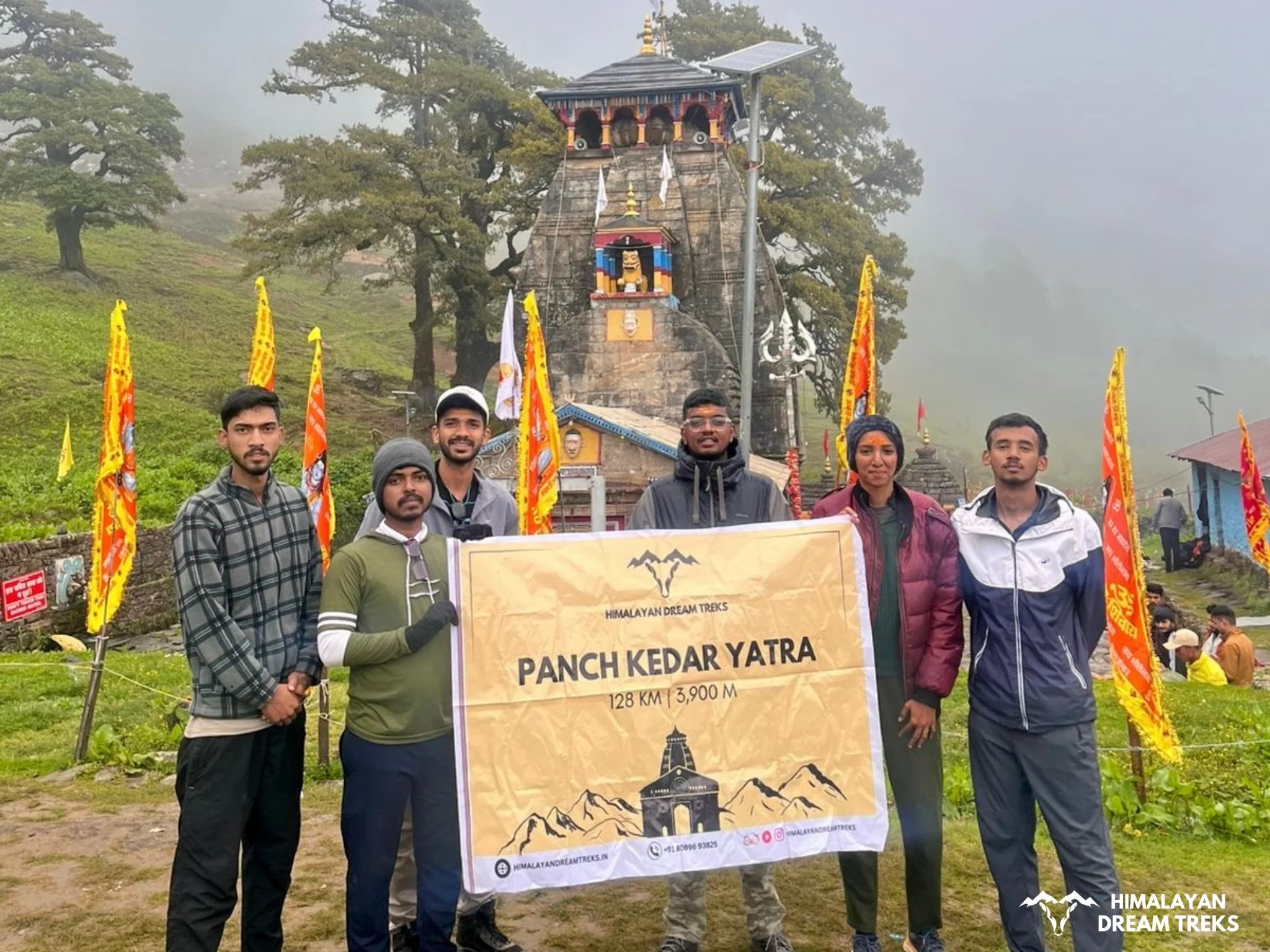


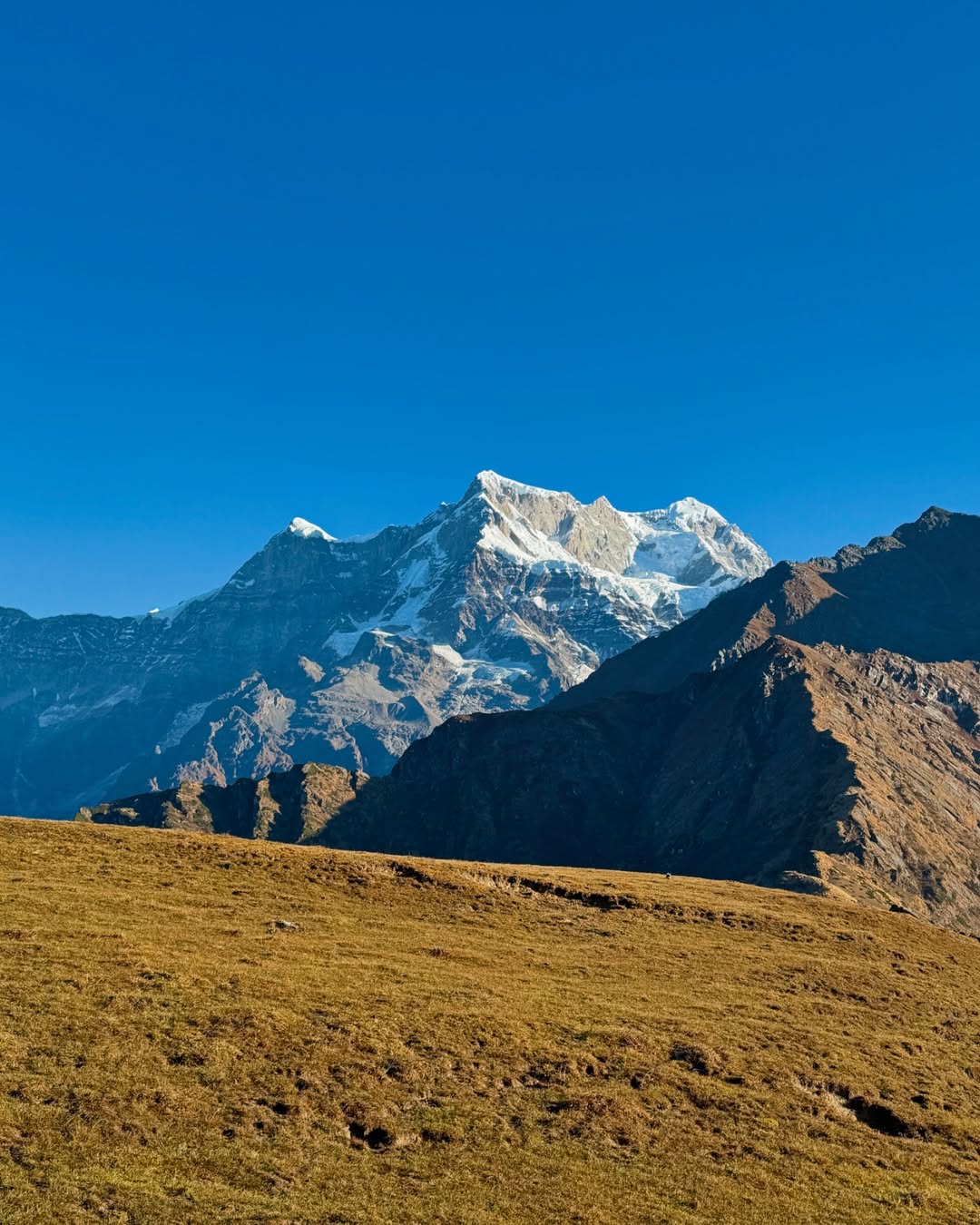



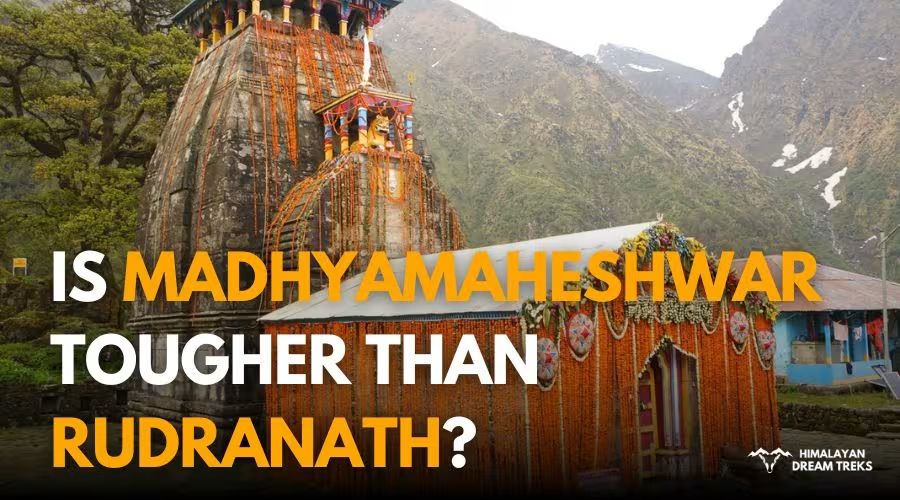





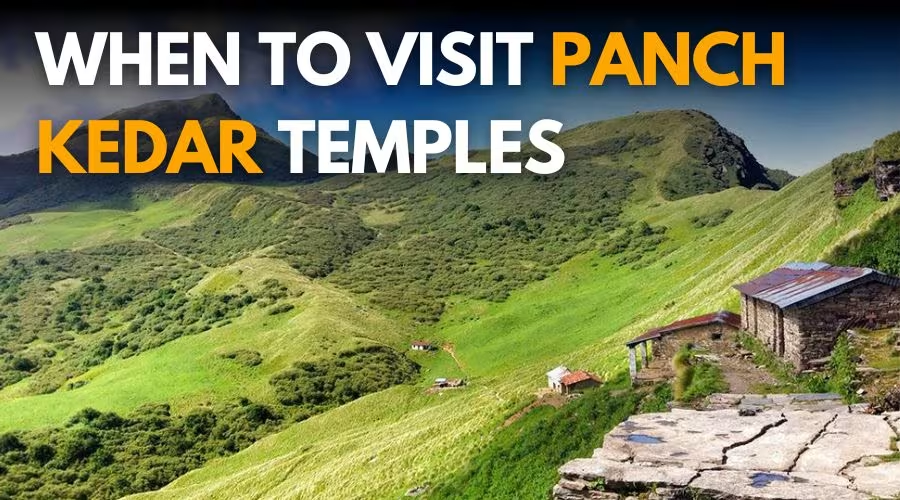
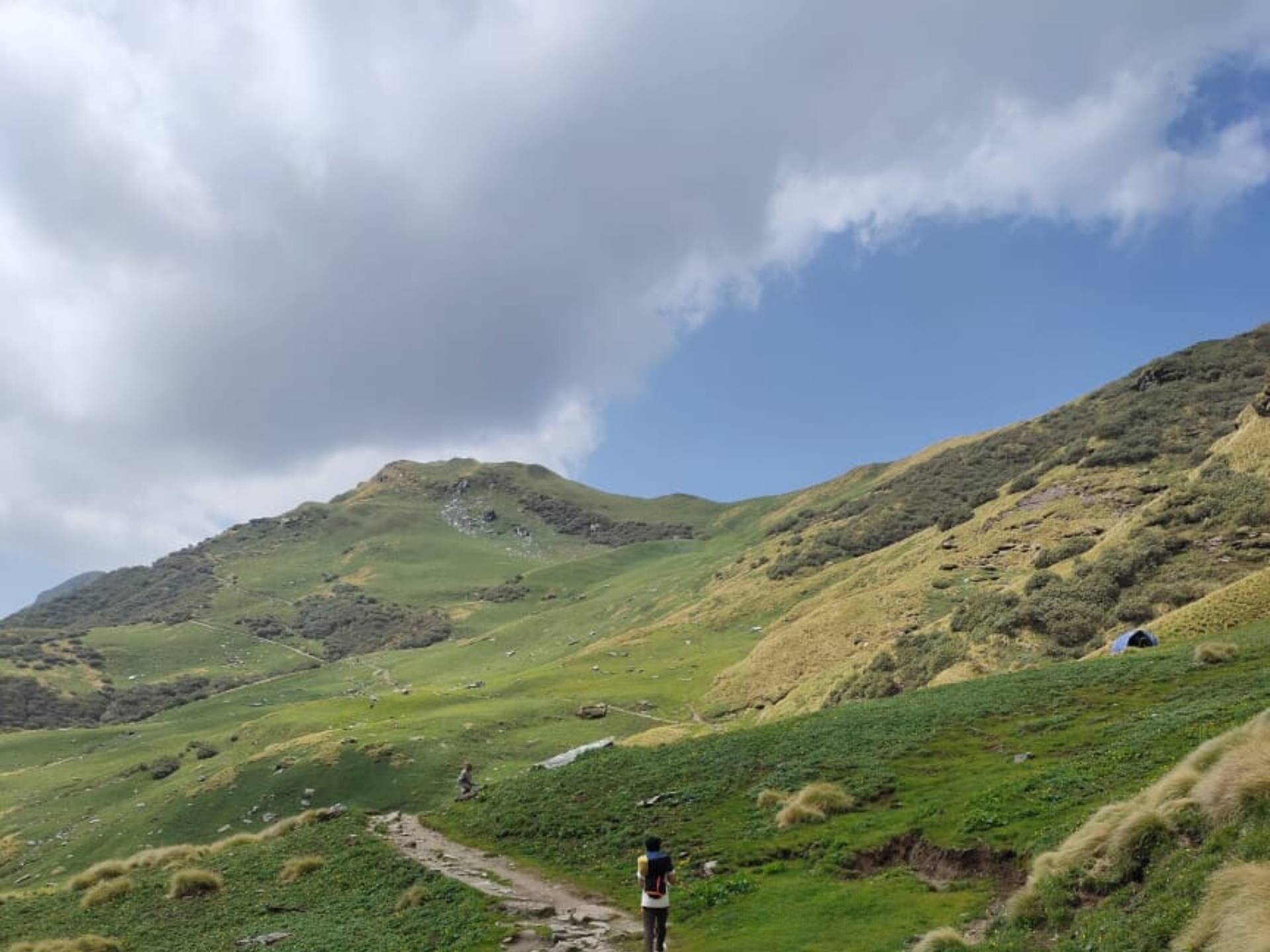

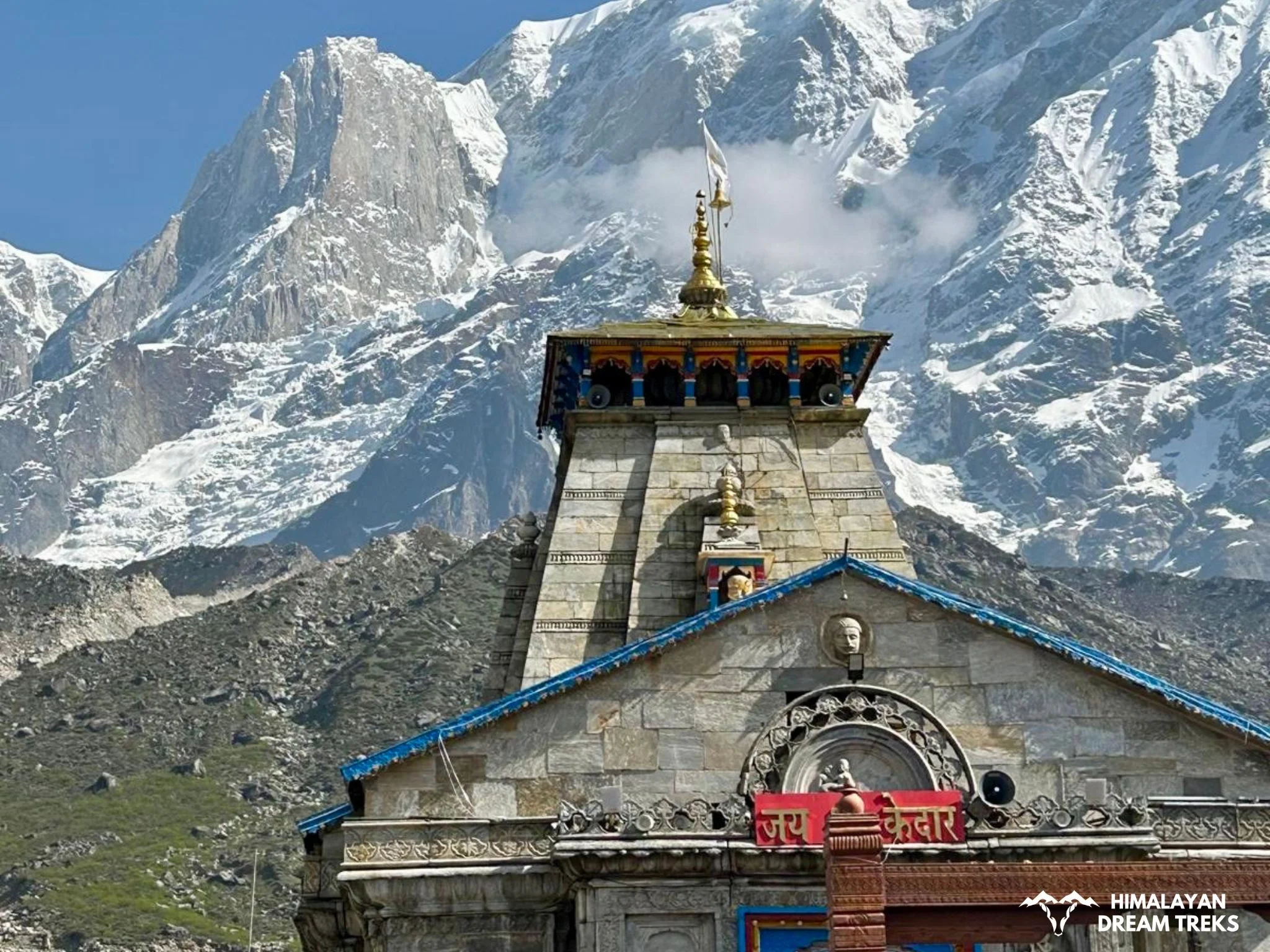
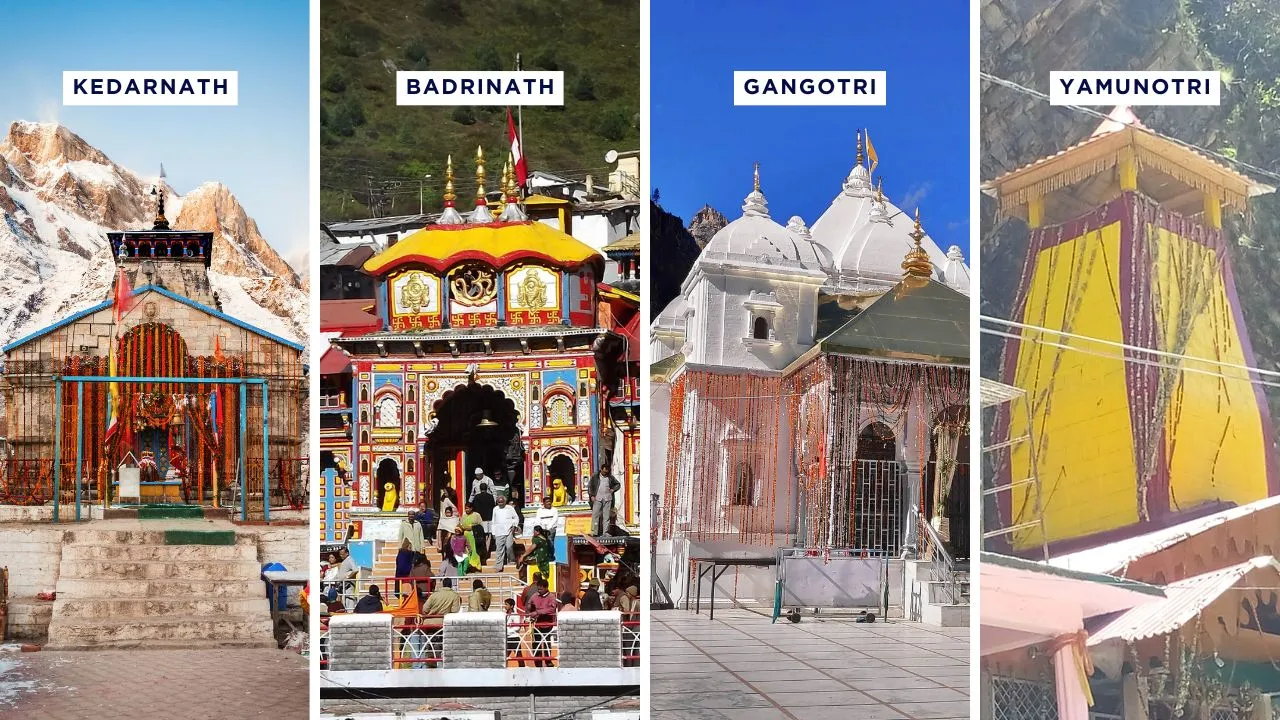

Leave a Comment